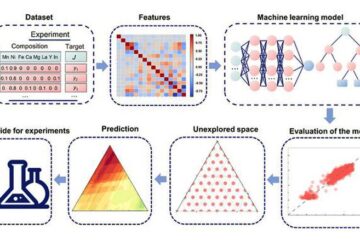New national study finds more than half of cheerleading injuries in US due to stunts

Whether rallying the crowd at a sporting event or participating in competition, cheerleading can be both fun and physically demanding. Although integral to cheerleading routines, performing stunts can lead to injury.
Stunt-related injuries accounted for more than half (60 percent) of U.S. cheerleading injuries from June 2006 through June 2007, according to a new study conducted by researchers at the Center for Injury Research and Policy of The Research Institute at Nationwide Children's Hospital.
Published as a series of four separate articles on cheerleading-related injuries in the November issue of the Journal of Athletic Training, the study focused on general cheerleading-related injuries, cheerleading stunt-related injuries, cheerleading fall-related injuries and surfaces used by cheerleaders. Data from the study showed that nearly all (96 percent) of the reported concussions and closed-head injuries were preceded by the cheerleader performing a stunt.
“In our study, stunts were defined as cradles, elevators, extensions, pyramids, single-based stunts, single-leg stunts, stunt-cradle combinations, transitions and miscellaneous partner and group stunts,” said author Brenda Shields, research coordinator in the Center for Injury Research and Policy at Nationwide Children's Hospital.
The most common injuries were strains and sprains (53 percent) and injuries occurred most frequently during practice (83 percent). The top five body parts injured were the ankle (16 percent), knee (9 percent), lower back (9 percent) and head (7 percent).
The study also showed that nearly 90 percent of the most serious fall-related injuries were sustained while the cheerleaders were performing on artificial turf, grass, traditional foam floors or wood floors.
“Only spring floors and 4-inch thick landing mats placed on traditional foam floors provide enough impact-absorbing capacity for two-level stunts,” explained Shields. “There is a greater risk for severe injury as the fall height increases or the impact-absorbing capacity decreases, or both.”
Data for the study were collected using Cheerleading RIO™, an Internet-based reporting system for cheerleading-related injuries.
The Center for Injury Research and Policy (CIRP) of The Research Institute at Nationwide Children's Hospital works globally to reduce injury-related pediatric death and disabilities. With innovative research as its core, CIRP works to continually improve the scientific understanding of the epidemiology, biomechanics, prevention, acute treatment and rehabilitation of injuries. CIRP serves as a pioneer by translating cutting edge injury research into education, policy and advances in clinical care.
Media Contact
All latest news from the category: Studies and Analyses
innovations-report maintains a wealth of in-depth studies and analyses from a variety of subject areas including business and finance, medicine and pharmacology, ecology and the environment, energy, communications and media, transportation, work, family and leisure.
Newest articles

Unlocking the secrets of supercritical fluids
A study now published in Nature Communications brings remarkable insights into the enigmatic behavior of supercritical fluids, a hybrid state of matter occupying a unique space between liquids and gases,…

Top marks for IPP facilities
The European research consortium EUROfusion has had more than 100 fusion facilities in its member states independently assessed. The facilities of the Max Planck Institute for Plasma Physics (IPP) were…

Machine learning accelerates discovery of high-performance metal oxide catalysts
Researchers have harnessed the power of artificial intelligence to significantly advance the discovery and optimization of multicomponent metal oxide electrocatalysts for the oxygen reduction reaction (ORR). This breakthrough has the…





















